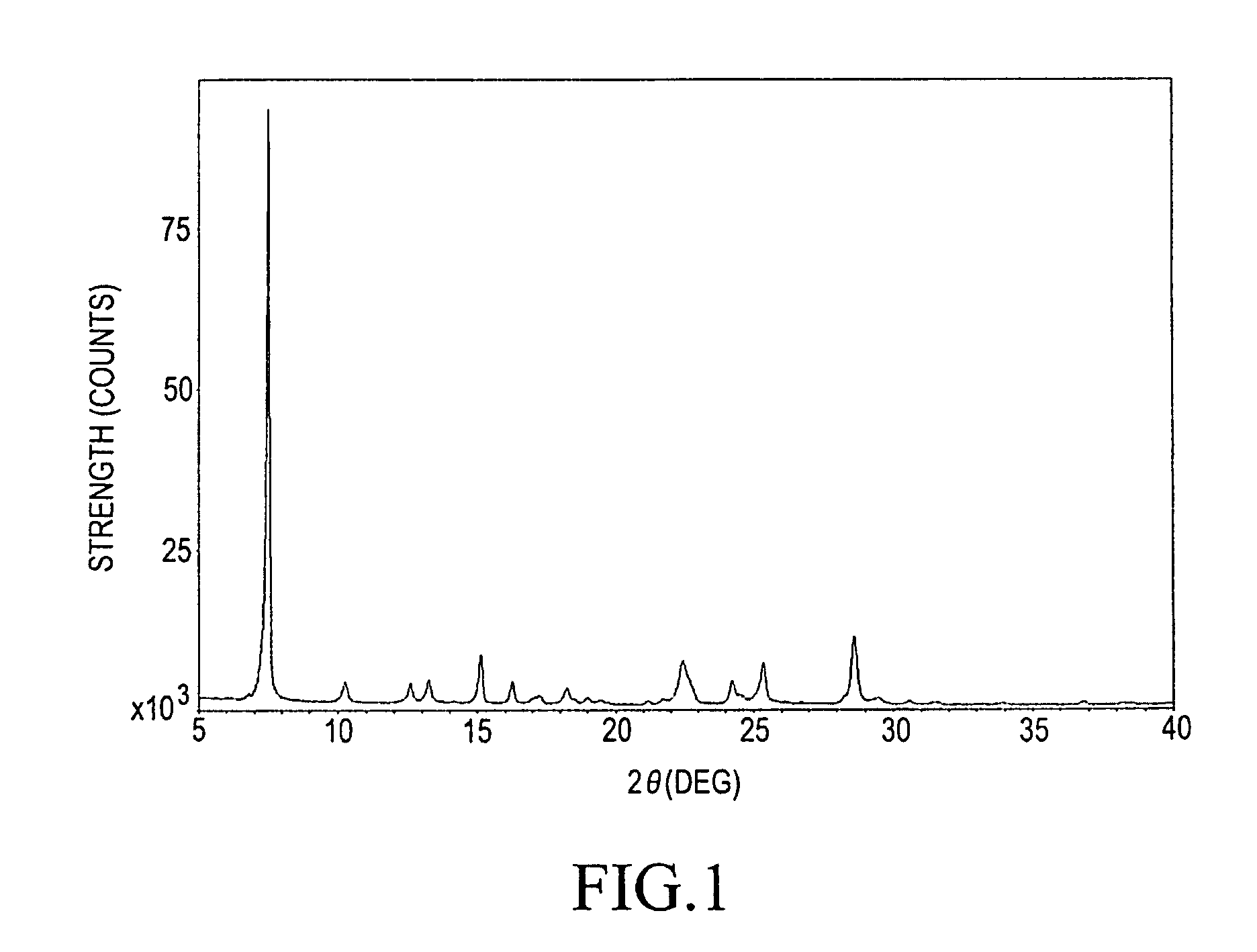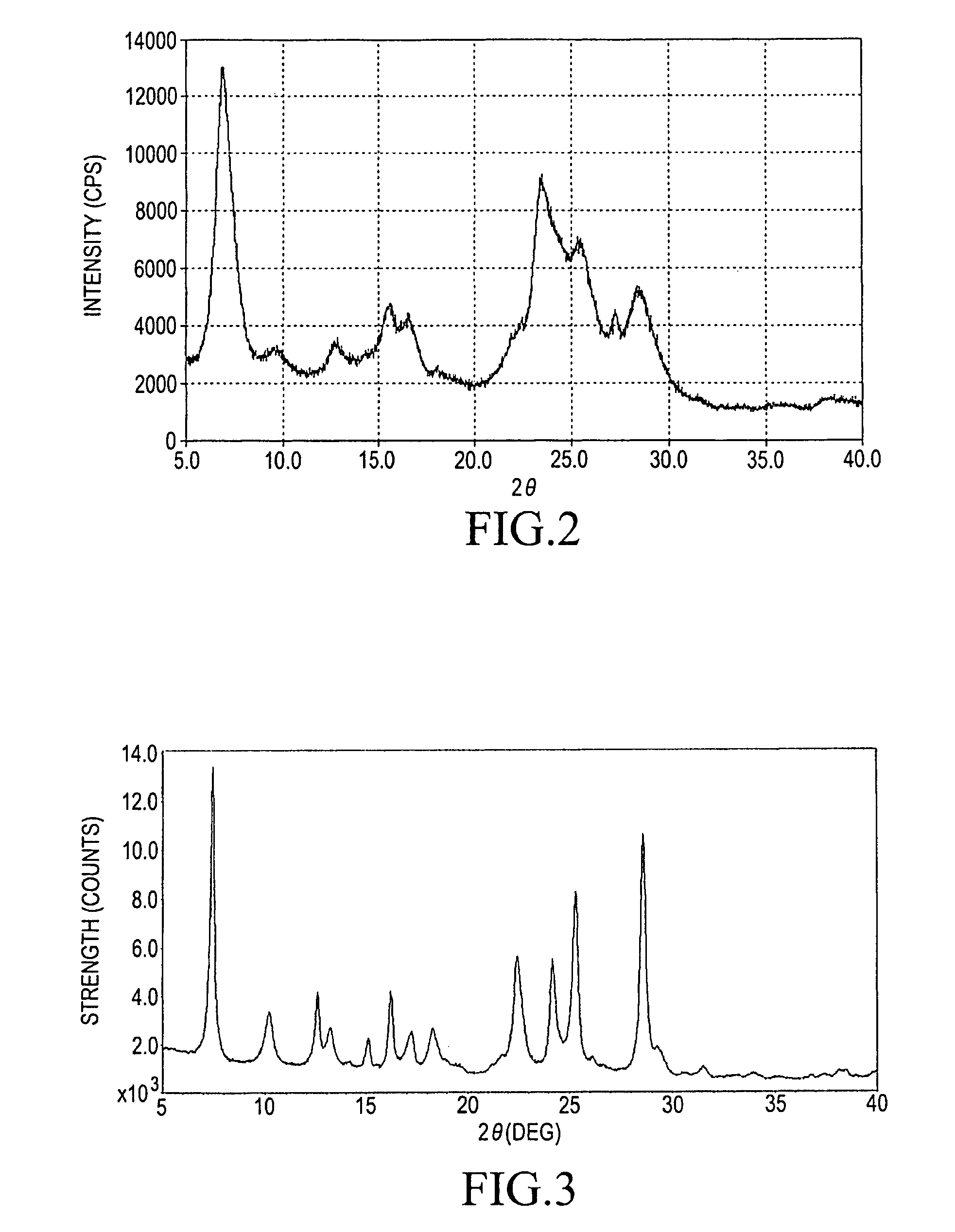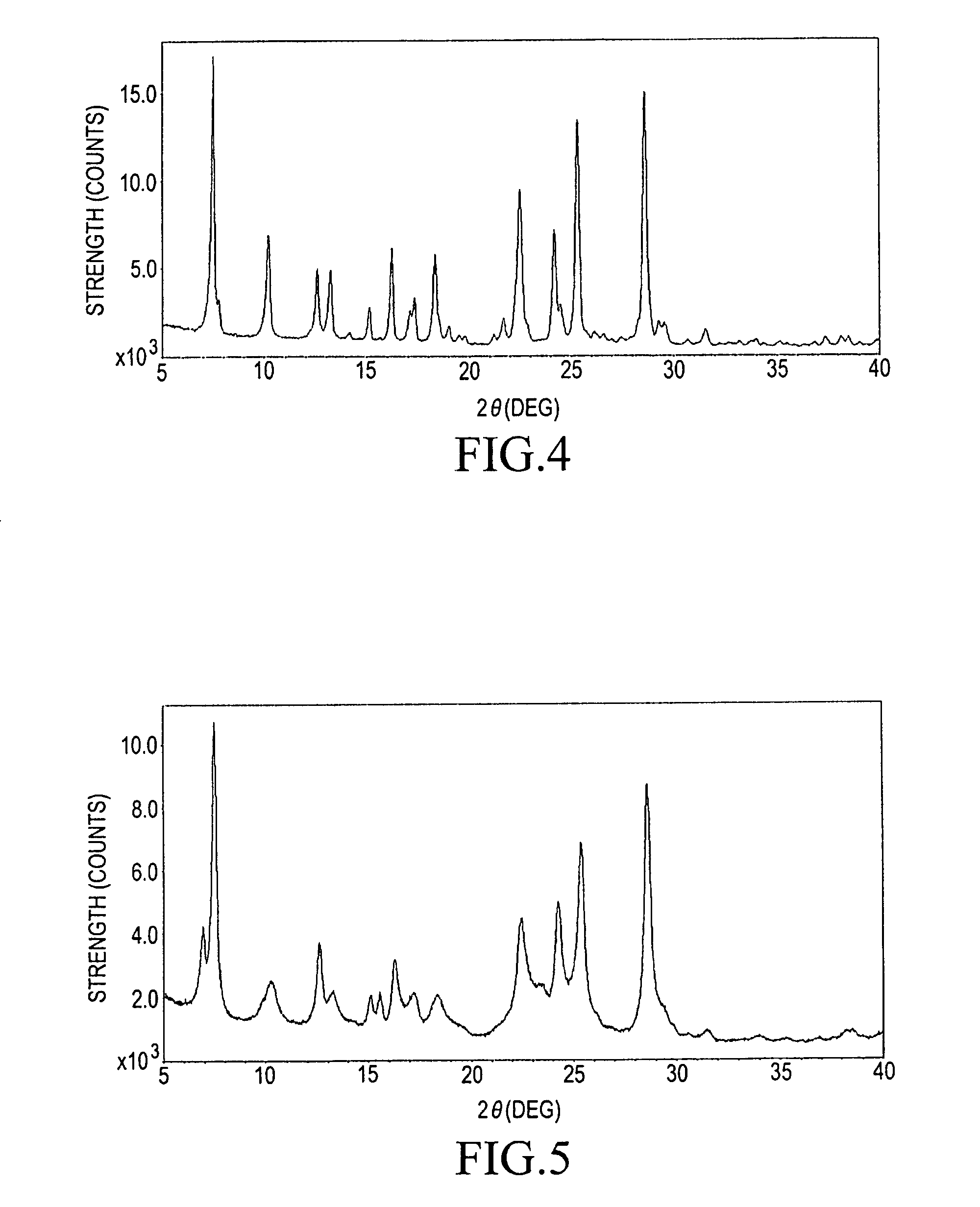Method for producing α-form titanylphthalocyanine and electrophotographic photoreceptor comprising α-form titanylphthalocyanine
a technology of phthalocyanine and phthalocyanine, which is applied in the direction of electrographic process, instruments, organic chemistry, etc., can solve the problems of complex procedure, inconvenient application of conventional titanylphthalocyanines to charge generating materials, and complicated equipment for synthesis, so as to achieve excellent photosensitive characteristics, excellent primary characteristics, and low crystallization degree
- Summary
- Abstract
- Description
- Claims
- Application Information
AI Technical Summary
Benefits of technology
Problems solved by technology
Method used
Image
Examples
example 1
Step (1-A): Preparation of α-Form Titanylphthalocyanine as Starting Material (i.e., Crude Titanylphthalocyanine Having α-Form Polymorph)
[0066]100 g (0.780 mol) of o-phthalonitrile and 1 L of quinoline were charged into a 2 L separable flask. The mixture was stirred under a nitrogen atmosphere. 84.98 g (0.448 mol) of titanium tetrachloride was added to the mixture. Subsequently, the mixture was heated to 180° C. and stirred with heating at the same temperature for 6 hours. After the reaction was completed, the temperature in the system was allowed to be decreased to 150° C., and then the reaction mixture was filtered with heating. Subsequently, 1 L of DMF heated (at 110° C.) was added thereto and the resulting residue was washed.
[0067]The resulting wet cake was added to 640 mL of DMF and dispersed at 130° C. for 2 hours. The dispersion was filtered with heating at 130° C. Subsequently, 1 L of DMF was added thereto and the resulting residue was washed. This routine procedure was repea...
example 2
Step (2-A): Preparation of α-Form Titanylphthalocyanine as Starting Material
[0074]The similar procedures to those described in the above step (1-A) in the Example 1 were employed with the proviso that each material was used in 40 times in its amount to give a blue solid (in producing amount: 2850 g).
Step (2-B): Acid Pasting Treatment
[0075]The similar acid pasting procedures to those described in the above step (1-B) in the Example 1 including the drying and the crushing or sieving procedures were employed with the proviso that each material was used in 40 times in its amount to give a low crystalline titanylphthalocyanine.
Step (2-C): Transformation
[0076]448.0 g of the blue powder of the low crystalline titanylphthalocyanine resulted from the above-described step (2-B), 7.5 L of DMF, and 8.2 L of glass beads each of which has a particle size of 0.5 mmφ were charged into a 20 L enamel tank. The mixture was subjected to dispersing at room temperature (at 25° C.) for 66 hours. The beads...
example 3
[0094]0.2 g of the titanylphthalocyanine crystal prepared in the Example 1; 0.2 g of polyvinylbutyral resin (under a trade name: Esrek BH-3, manufactured by Sekisui Chemical Co., Ltd.); 50 g of 3 mmφ glass beads; and 59.6 g of cyclohexanone were charged into a wide-mouthed bottle, and then subjected to 3 hour milling with a paint shaker to prepare a coating dispersion for forming a photoreceptor layer. This coating dispersion was applied on an aluminum plate by using a bar coater to give a film in a film thickness of 0.5 μm, and then the film was dried in air to form a charge generating layer.
[0095]Subsequently, 4.5 g of p-(N,N′-diphenylamino)benzaldehyde-N′-methyl-N′-phenylhydrazine (under a trade name: CT-501, manufactured by Fuji Photo film Co., Ltd.) as a charge transferring material (CTM); 4.5 g of a polycarbonate resin (under a trade name: Panlight L-1250, manufactured by Teijin Limited); and 51 g of methylene chloride were charged into a wide-mouthed bottle, and then ultrason...
PUM
| Property | Measurement | Unit |
|---|---|---|
| 2θ±0 | aaaaa | aaaaa |
| 2θ±0 | aaaaa | aaaaa |
| 2θ±0 | aaaaa | aaaaa |
Abstract
Description
Claims
Application Information
 Login to View More
Login to View More - R&D
- Intellectual Property
- Life Sciences
- Materials
- Tech Scout
- Unparalleled Data Quality
- Higher Quality Content
- 60% Fewer Hallucinations
Browse by: Latest US Patents, China's latest patents, Technical Efficacy Thesaurus, Application Domain, Technology Topic, Popular Technical Reports.
© 2025 PatSnap. All rights reserved.Legal|Privacy policy|Modern Slavery Act Transparency Statement|Sitemap|About US| Contact US: help@patsnap.com



